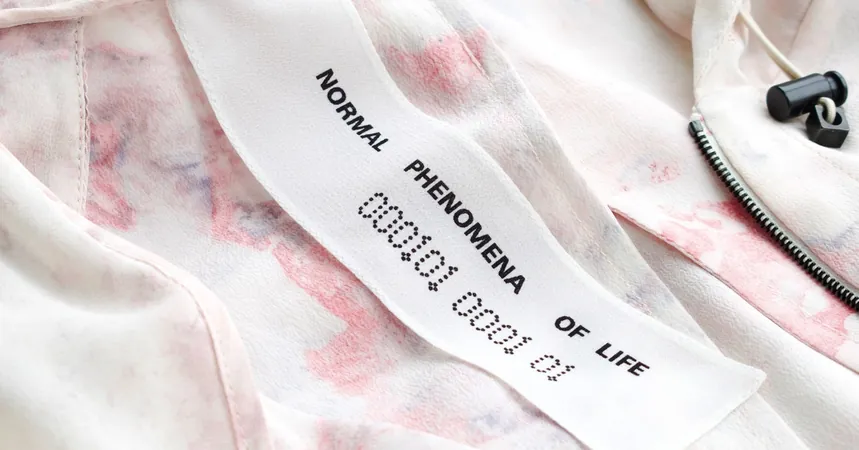
Unveiling Revolutionary Biomaterials That Could Transform Fashion and Construction
2024-10-03
Unveiling Revolutionary Biomaterials That Could Transform Fashion and Construction
In an era increasingly focused on sustainability, innovative products are emerging that challenge conventional methods in industries like fashion and construction. One standout item is the Exploring Jacket, which takes a unique approach to color. Unlike typical jackets that rely on chemical dyes, this revolutionary piece derives its hues from a fascinating source: the pigment-producing bacterium Streptomyces coelicolor. When this bacteria is applied to fabric, it incubates and produces vibrant colors ranging from striking reds to deep purples, creating designs that beautifully mimic the elegance of polished marble.
This jacket is part of the offerings from a groundbreaking online platform called Normal Phenomena of Life (NPOL), founded in 2023 by Natsai Audrey Chieza and Christina Agapakis. Their vision is to leverage the power of living organisms to create sustainable materials and products through the practice of biodesign. Chieza, a graduate with a background in architecture, emphasizes that nature has perfected the assembly of materials over billions of years, and her mission involves tapping into these natural processes to combat climate change and reduce reliance on fossil fuels.
Many of the items showcased on NPOL are designed to leave a smaller carbon footprint than their traditional counterparts. For example, the bacteria-derived dye utilized in the Exploring Jacket requires significantly less water compared to conventional plant-based dyes, eliminating the need for farmland—a massive stride toward ecological preservation.
Another remarkable product from NPOL is the Gathering Lamp, constructed from bioconcrete. This innovative material is produced at ambient temperatures using bacteria that extract limestone, achieving a remarkable 95% reduction in emissions compared to traditional cement. Additionally, the strength of bioconcrete is notable—it boasts three times the durability. Designed with sustainability in mind, the Gathering Lamp promotes easy repairs, upgrades, and recycling options, mitigating the environmental impact often associated with discarded items. “We need to keep materials in circulation,” Chieza insists, highlighting the importance of avoiding landfill waste from newly developed biobased materials.
NPOL collaborates with like-minded brands to accelerate the development and market introduction of biodesigned products. Chieza recognizes that scaling these innovative technologies often presents challenges, as they require careful engineering and sophisticated manufacturing processes, which can increase costs. The Exploring Jacket, priced at £4,000 (approximately $5,400), exemplifies this issue, though Chieza believes it is already more affordable than it should be.
While the thoughtful design process behind each NPOL product may not be immediately visible to consumers, Chieza implies this creates an intriguing dilemma. “We want people to recognize that our products are beautiful and unique, yet their purchasing habits often lean towards what's familiar and reliable,” she explains.
Looking ahead, Chieza envisions a future where consumers and brands alike are inspired to adopt biodesign. “It’s about utilizing materials at their source rather than relying on extensive supply chains that produce meaningless items,” she states. The ultimate goal is to create aesthetically pleasing products that enlighten consumers about the possibilities of sustainable design.
As we continue to grapple with climate change, advancements like those offered by NPOL could be the key to a greener, more sustainable future in both fashion and construction. Can we envision a world where stunning design and environmental consciousness go hand in hand? Time will tell.



 Brasil (PT)
Brasil (PT)
 Canada (EN)
Canada (EN)
 Chile (ES)
Chile (ES)
 España (ES)
España (ES)
 France (FR)
France (FR)
 Hong Kong (EN)
Hong Kong (EN)
 Italia (IT)
Italia (IT)
 日本 (JA)
日本 (JA)
 Magyarország (HU)
Magyarország (HU)
 Norge (NO)
Norge (NO)
 Polska (PL)
Polska (PL)
 Schweiz (DE)
Schweiz (DE)
 Singapore (EN)
Singapore (EN)
 Sverige (SV)
Sverige (SV)
 Suomi (FI)
Suomi (FI)
 Türkiye (TR)
Türkiye (TR)